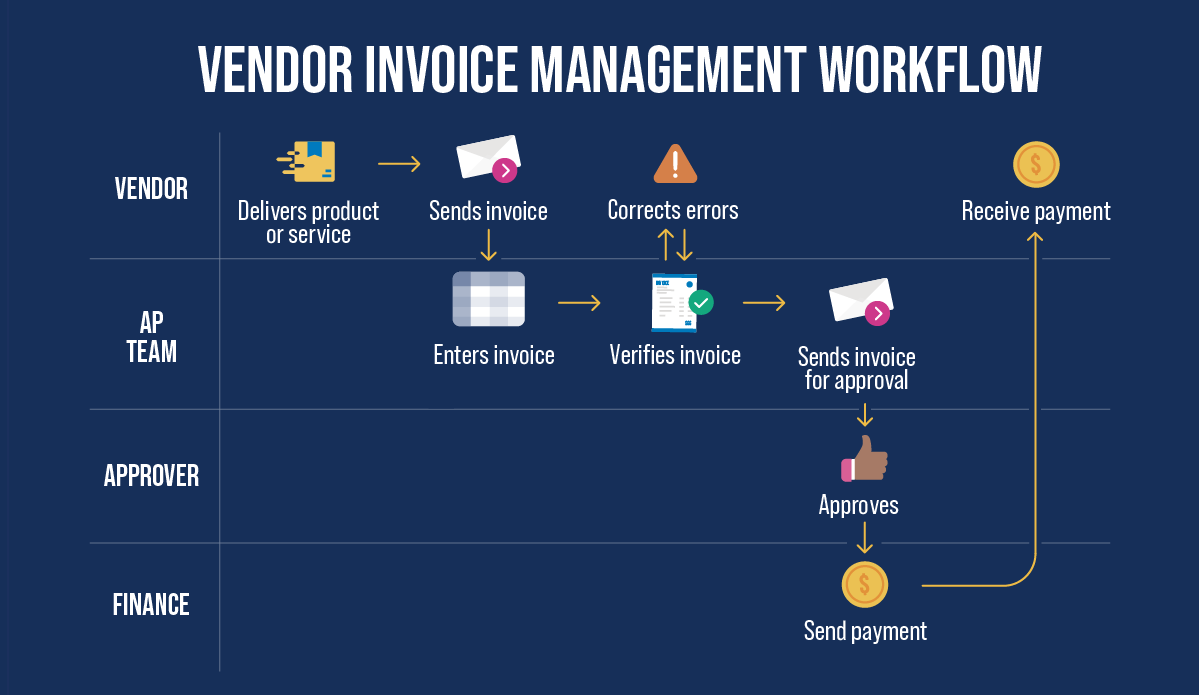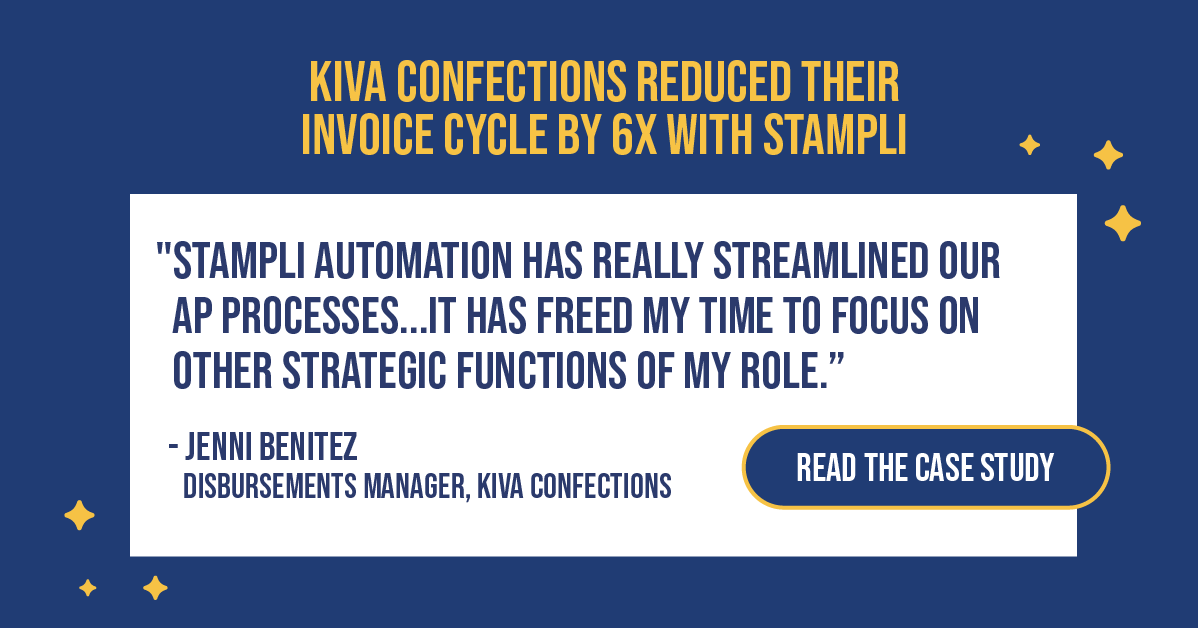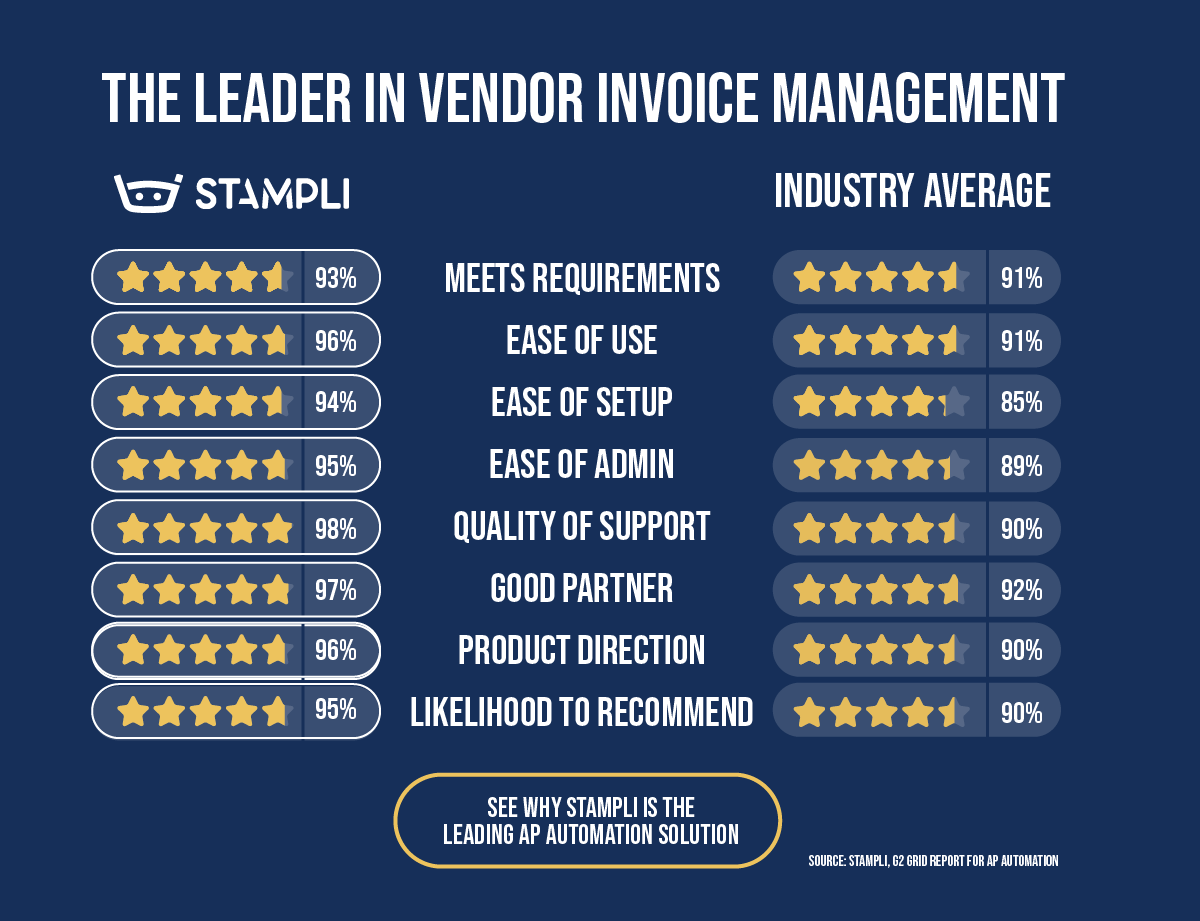How to Build an Efficient Vendor Invoice Management Workflow

Vendors don’t like late payments.
This isn’t exactly a news flash to anyone (especially vendors), but it reveals a core challenge for AP departments—paying vendors on time. It’s not a minor problem either. In a 2023 survey of finance leaders, 45% said they expect their Days Payable Outstanding (DPO) to increase, meaning that vendors will be paid later.
Not great news if you’re a vendor. (And aren’t all businesses vendors?)
Maintaining a fast and effective vendor invoice management workflow is key to good vendor management (and good vendor relations). It removes bottlenecks and streamlines inefficient business processes to speed up end-to-end invoice processing and get vendors paid on time.
This article covers the steps of the vendor invoice management workflow, challenges facing AP teams and vendors, and best practices for improving processing efficiency. We’re going to do things a little differently and look at invoice processing from the perspective of a company “in the middle” as both a vendor and buyer.
Let’s get started!
Understanding the vendor invoice management workflow
I’m the CFO at Java World, a coffee roaster and distributor based in Portland, Oregon, with locations around the world. We roast and sell ethically and sustainably sourced coffee beans to restaurants, coffee shops, and food service companies around the world. Java World sells our own branded coffee beans on the consumer market in the US. We buy coffee from small, community-based farms and support them to grow sustainable coffee, create jobs, and invest in their communities..
Our supply chain is global, reaching from coffee farms in South America and Africa to logistics to vendors supporting our operations worldwide. Rapid growth and supply chain disruptions from the COVID-19 pandemic have strained our existing vendor invoice management processes, so we’re looking to streamline and optimize our workflows.
Also, as an international supplier of roast coffee, we are looking at our own accounts receivables – the same disruptions that upset our supply chain have also affected our ability to ship our product and get paid. I’m under pressure to maximize cash flow wherever possible while prioritizing support for our coffee producers.
My goals for optimizing our vendor invoice management workflow are to reduce manual processing times, improve processing accuracy, and enhance visibility into our accounts payable processes.
To begin, let’s look at our existing invoice management process.
Steps in the vendor invoice management workflow
Our vendor invoice management workflow is a four-step process from invoice receipt to payment. Let’s break down each step and see where I can make improvements.

Step 1: Invoice entry and coding
The process starts when a vendor emails or mails us an invoice after delivering a product or service. We have a central email address for invoices, but we’re still working to get every vendor on board with it. Once our AP team has the invoice, they scan it and enter the invoice data into our SAP VIM system.
After entering the invoice data, the AP clerk looks up the general ledger (GL) codes for the line items. Because we purchase so many types of coffee, our AP clerks have an intimate knowledge of our GL codes. Even then, it can take a long time to ensure every shipment of coffee has the correct code.
Once AP enters the invoice details, they move on to verifying the invoice.
Step 2: Invoice verification
The next step is to perform 3-way matching to verify the invoice information against our purchase order (or sales orders) and the shipping documents. The AP clerk pulls up the PO and shipping receipts in SAP and manually checks the details to see if they match. If they match, great! If not, things get a bit more complicated.
If the mismatch is between the delivery notes and invoice, the AP clerk will call our procurement and receiving departments to confirm the actual quantity we received. If receiving confirms the mismatch, the clerk will then check with the vendor to confirm what quantity they shipped. Confirmation can be a time-consuming process, especially when we need to track down shipping records and other documents. However, we pride ourselves on our good vendor relationships, so we’re usually able to resolve the situation to our satisfaction.
Ideally, I’d like our three-way matching process to be a bit more robust. For example, I’d like to automate the matching process, and also establish thresholds for when we match a shipment. We simply can’t track down every shipment of coffee, so I’d prefer to only investigate large discrepancies. Unfortunately, our manual invoice validation process doesn’t let us easily do that.
After they verify the invoice, the AP clerk sends it on for approval.
Step 3: Invoice approval
Once AP verifies the invoices and clears up any discrepancies, they forward the invoice for approval. We have a multi-layered approval process with different approval levels for spend level, product type, and location. The AP clerk emails the invoice to the appropriate approver, who signs off on the invoice and emails it back. Then the clerk approves the invoice in SAP and sends it for payment.
I’d like to improve our approval workflows to speed things up. For example, today if an invoice goes to the wrong approver, or if it goes to the right approver and they forget about it, the process can grind to a halt. I’d prefer a system that automatically routes the invoice to the correct approver and sends notifications if they don’t sign off within a certain time.
Step 4: Payment
After the approver signs off on the invoice, AP sends it on to finance for payment. We use a few different payment methods depending on the vendor’s location. We pay US and Canada suppliers by check or ACH transfer, and we pay international vendors by SWIFT wire transfer.
Because we’re using different payment methods and systems, we’re vulnerable to payment processing errors. For example, an employee could enter the wrong payment amount or pay the wrong vendor, or we could accidentally pay the same invoice twice. I’d like more control and oversight over our payment processing to reduce the chance of these errors.
Challenges with vendor invoice management
As I mentioned earlier, our main challenge with our vendor invoice management workflow is cash flow management. Our AP processes are slow and error-prone, and leave us vulnerable to fraud. As a result, we’re often late paying our vendors and we lose a significant amount of money to duplicate or erroneous payments, which negatively affects our cash flow and leaves us with less money to reinvest in our business and support our coffee producers. At the same time, we’re facing longer collection times on the accounts receivable side, which gives us less cash in hand to cover our accounts payable balances.
Several issues lie at the heart of this challenge.
Lost or misplaced invoices
Although we have a central email address for vendor invoices, our vendors are still sending invoices to other email addresses or by regular mail. These invoices often get lost or misplaced, causing processing delays.
Inaccurate or fraudulent invoices
Invoices often contain errors and incomplete or fraudulent information. We usually catch these during our invoice verification process, but with the large volume of invoices we receive we don’t catch them all. Different time zones, languages, and unclear channels make communication a challenge. Miscommunication can cause processing and payment delays.
I’d like processes that simplify communication and remove obstacles for information sharing.
Manual processing
We still rely on manual processes for several key AP tasks. As I’ve mentioned, these processes are slow and error-prone. They’re also not easily scalable. Our AP clerks have an encyclopedic knowledge of the coffee industry. Expanding our invoice processing capacity means hiring AP clerks with a similar level of knowledge or investing in training.
Best practices for optimizing vendor invoice management workflows
To optimize our vendor invoice management workflows, I start by addressing these challenges and then taking a step-by-step approach to rework how we manage invoices. My goal is to get a better handle on our cash flow so our business has more cash in hand to support our producers and fund operations.
Here are a few things I can do:
Optimize AP workflows
I can start by identifying and addressing the bottlenecks in our current vendor invoice workflows. For example, I can send out a communication informing vendors and staff that all invoices must go to our central email address. As many of our coffee producers still send us paper invoices, I can work with them and move them to electronic options. I can also ensure that our AP clerks are reviewing invoice due dates so we can pay our coffee producers on time.
One of the biggest efficiency gains comes from optimizing our manual processes. For example, I can use intelligent document management technology to automate invoice scanning and data extraction, which reduces errors and makes it much easier to manage invoices.
I can also improve our payment processing by finding ways to unify our payment methods and make payments in batches. I can also look at places where we can replace inefficient payment methods like checks with more efficient electronic payment methods.

Improving communications
It’s vital to get everyone on the same page. Our accounts payable team interacts with all our vendors and almost every other department in our business. I can review controls and processes to simplify communications and make it easier to share information. Even better, I can implement a centralized communications system where AP employees can communicate with vendors and stakeholders in one place.
Automating manual tasks
Streamlining manual workflows and improving communications can make a big difference in how we manage vendor invoices, but it’s only half the battle. We’re still vulnerable to errors and fraud, and we don’t have visibility into our AP data and processes. And our manual processes aren’t scalable, so our invoice processing may not keep up with the growing volume of invoices.
Accounts payable automation solutions eliminate manual processes and provide real-time visibility to AP data. The right AP solution can evolve our vendor invoice management workflows in a number of ways:
Faster, more accurate invoice scanning and coding
AP automation with intelligent document processing and machine learning scans, codes, and archives invoices faster and more accurately than manual processing.
Reduced errors and fraud
Automated invoice matching lets us verify every invoice to simplify auditing and detect errors and potential evidence of fraud.
More efficient approval routing
AP automation solutions automatically route verified invoices to the appropriate approver and send regular reminders if they don’t approve the invoice within a reasonable time.
Unified and consistent payments
Payment automation solutions like Stampli Direct Pay bring different payment methods together into one platform with options to pay in multiple currencies.
By implementing these best practices and moving to an AP automation platform, I can optimize my vendor invoice management workflows, get control of cash flow, and ensure that our business has enough money to invest in and support our coffee producers.
Optimize vendor invoice management workflows with Stampli
How does Stampli help us optimize vendor invoice management workflows?
First, Stampli’s solution uses machine learning and AI to automate invoice coding and verification, reducing the need for manual data entry and coding. This lets us redeploy our AP employees (who are also coffee experts) into higher-value tasks working more closely with our farmers. Stampli also helps us control invoice errors and fraud by providing real-time data visibility through visual dashboards.

Also, Stampli helps us optimize our international AP operations. Their cloud-based solution and vendor portal provides secure access anywhere in the world. It allows our coffee producers to communicate directly with our AP team members, ask and answer questions, and see their payment status, all from a computer or smartphone. Stampli Direct Pay brings all our payment methods together in a single solution and gives us the option to easily pay vendors in multiple currencies.
Finally, Stampli seamlessly integrates with SAP S/4HANA, to enhance our ERP’s functionality and share data and communications across our company – ensuring that everyone is on the same page.
The bottom line: Stampli is the ideal choice for optimizing your vendor invoice management workflows. Contact Stampli today for a free demo.